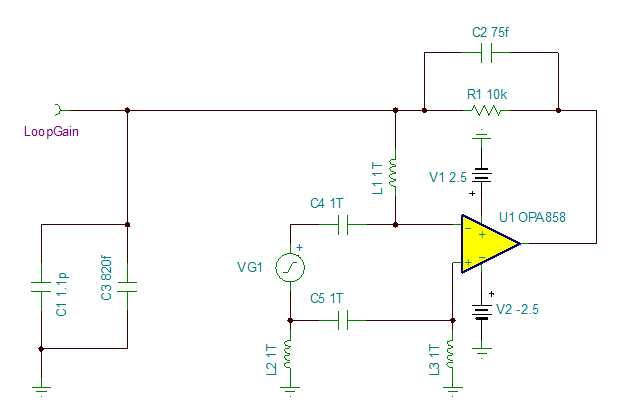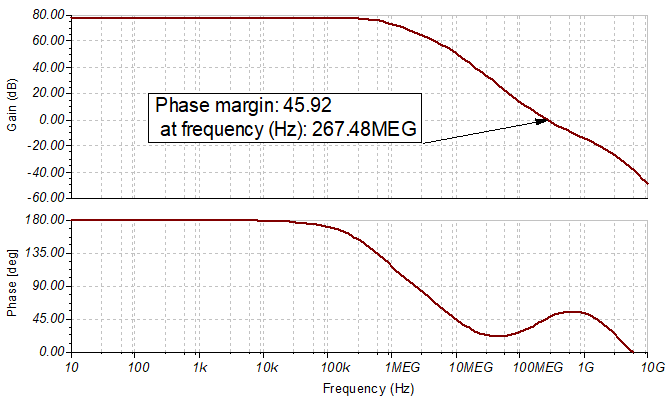JAJU648A November 2018 – April 2022 TLV3601 , TLV3601-Q1 , TLV3603 , TLV3603-Q1
- 概要
- Resources
- 特長
- アプリケーション
- 5
- 1System Description
- 2System Overview
- 3Hardware, Software, Testing Requirements, and Test Results
- 4Design Files
- 5Related Documentation
- 6About the Author
- 7Revision History
2.4.3.3 OPA858 Loop-Gain and Phase Margin Simulation
To get a pulse-response with fast rise and fall time, some overshoot and ringing on the rising and falling edges of the pulse is expected. The phase-margin of the OPA858 circuit is targeted at 55° to achieve a Q factor of 0.95. Use the circuit in Figure 2-10 to simulate the loop-gain of the OPA858. For more information on transimpedance amplifier stability theory and design, see the What You Need To Know About Transimpedance Amplifiers blog, part 1 and part 2.
 Figure 2-10 OPA858 Loop-Gain Analysis TINA Schematic
Figure 2-10 OPA858 Loop-Gain Analysis TINA SchematicThe simulated loop-gain magnitude and phase plotted in Figure 2-11 predict a phase-margin of approximately 45°, which is lower than the expected calculated value because the calculation is only a first-order approximation.
 Figure 2-11 Simulated Loop Gain of the OPA858 Circuit
Figure 2-11 Simulated Loop Gain of the OPA858 Circuit